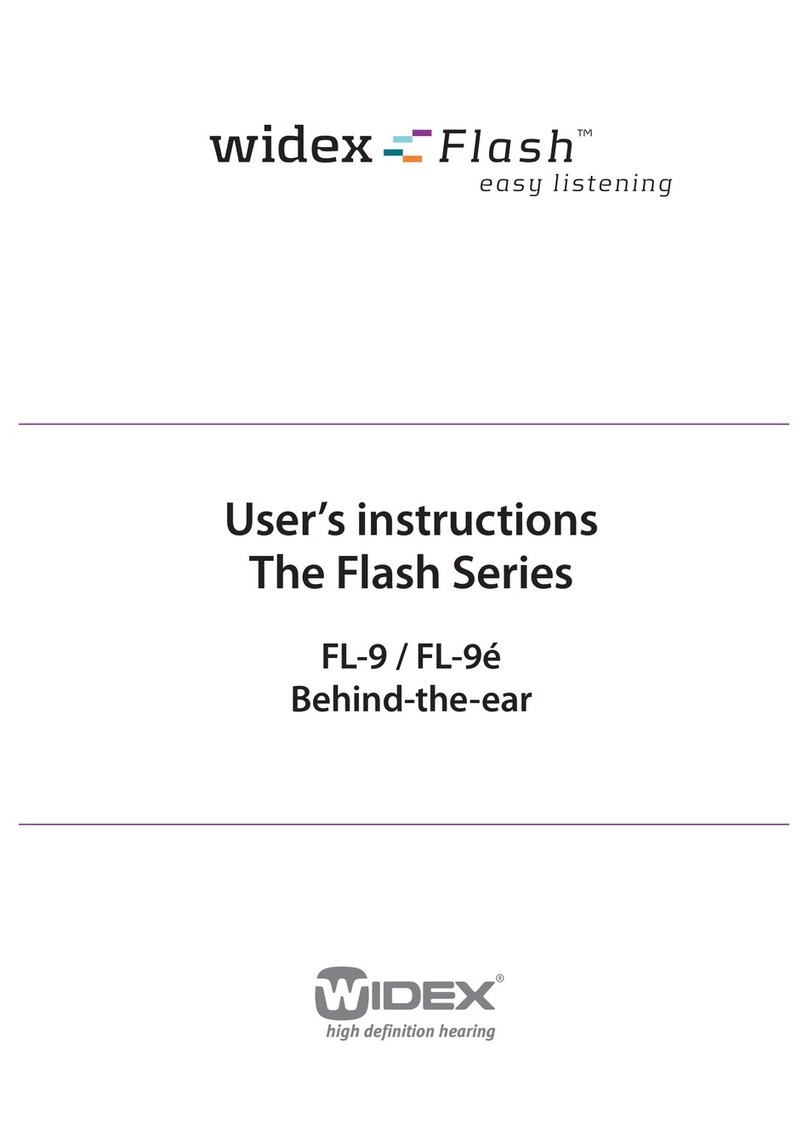
www.onsemi.com
3
ON Semiconductor Confidential
ON Semiconductor
The main features are illustrated by the block diagram shown in Figure 3 on page 4.
Adaptive Directional Microphone Synthesizes a directional microphone pattern from two omnidirectional
microphones (front and rear). Automatically steers/adjusts the microphone
pattern to minimize interfering noise sources. The directional block includes an
optional low-frequency boost to equalize the directional microphone response.
Environment Classification Automatically classifies the acoustic environment and activates the
appropriate program memory. Detection characteristics are adjustable, and the
behavior of the device in each environment is completely flexible. Supports
quiet, speech in quiet, noise, speech in noise, and wind.
8 Program Memories The device supports up to 8 program memories with independent parameters.
Selection of the active memory can be performed by using push-button
controls, or via the environment classifier feature.
General Purpose Filters Eight general-purpose digital filters are provided for fine tuning the audio path.
Each of the eight filters are second-order, Infinite Impulse Response (IIR)
filters (also called biquads). Four filters (pre-biquads) are placed near the input
stage, ahead of the WDRC processing; and four filters are placed near the
output stage, after the WDRC processing. Filter coefficients are completely
programmable via Sound Designer Software.
Datalogging A short-term data log periodically records device status and system events into
a circular buffer. A total of 512 events can be logged in the buffer which,
assuming a log interval of 1 hour, covers a total time period of over 4 weeks. A
separate long-term data log keeps track of how much time has been spent in
each program memory.
Automatic Receiver Detection (ARD) The ARD feature is intended for detachable RIC-style hearing aids. It provides
a means of automatically detecting the type of attached receiver link. ARD
operates in real time and provides rapid detection of the connected receiver
link with no audible artifacts.
Firmware updates The Pre Suite framework supports field upgradeable firmware.
Sound Generator for Tinnitus Treatment Consists of a random noise generator with adjustable frequency shaping and
randomized time modulation for tinnitus treatment.
Configurable Man-Machine Interface (MMI) The MMI feature supports a push-button style volume control (up/down
presses), an 8-program memory select function, and an automatic telecoil
activation feature. Operation of the MMI is fully configurable, and the IO pins
used for the MMI functions are selectable through the Sound Designer
Software Windows application. Seventeen different system events are
signaled through an acoustic indicator feature that supports both tone-based
and pre-recorded alert signals.
Fitting All device parameters can be accessed over the wired interface via the
Sound Designer SDK. By providing a consistent API across multiple platforms,
the Software Development Kit simplifies the development of fitting software.
Diagnostics The Ezairo 7111 firmware bundle also provides numerous features designed
to simplify hearing-aid design and manufacturing. These features include
battery management, live display data, tone generation, and feedback-path
measurement.
Table 1. Ezairo 7111 Firmware Features (Continued)
Feature Description
























